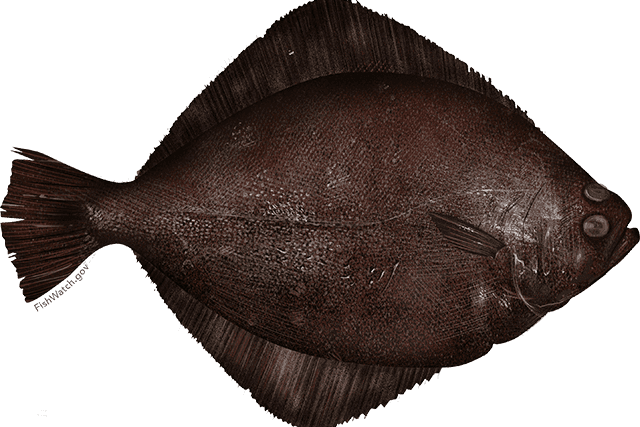Petrale Sole

Species Details
Eopsetta Jordani
Pleuronectidae
Pleuronectiformes
Offshore
4 - 8 lbs.
14" - 24"
Petrale Sole (Eopsetta jordani) Fish Description
The Petrale sole, also recognized as Jordan’s flounder, California sole, Sole, Flounder, Brill, Petral, Round-nosed sole is a right-eyed flounder, meaning both of its eyes are on the right side, and has an oval to round body.
These fish have large mouths, containing two rows of small, sharp teeth on the upper half of their jaw and one row for the lower half. They have a uniformed color ranging from light to dark brown on the upper side of its body, and the underside is merely white, or occasionally with pink traces.
Petrale Sole Diet
The diets of Petrale sole transition with them as they grow older. As larvae, they eat plankton. Small juveniles would consume mysids, sculpins, and other young flatfish as themselves. Large juveniles to adults would move on to eat shrimp, crustaceans, krill, pelagic fishes, stars, and smaller petrale soles as well.
Petrale Sole Size
Petrale sole fish can increase in size fairly quickly when they’re young. Female Petrale Sole fish tend to grow faster than males. They, female Petrale Sole, can reach up to 24 inches long, while their male counterparts may reach up to 18 inches long. They can weigh up to 3.7 kilograms (8.2 lb).
Petrale Sole fish can live quite long, ranging up to 35 years. However, with the recent data presented, it suggests only a few now can live longer than 17 years.
Interesting Facts About The Petrale Sole
- "Sole" refers distinctively to the kind of fish in the family Soleidae in the order Pleuronectiformes.
- It is representative of 30 genera and 130 families of fish. And "Flounder," as a term, refers to families of fish like Achiropsettidae, Pleuronectidae, Paralichthyidae, and Bothidae.
- Petrale “sole” exactly means a right-eyed flounder because of its family Pleuronectidae in the order Pleuronectiformes! This is why we usually just refer to them as “Petrale” to properly label fish, as it can confuse ourselves and others.
Petrale Sole Fishing Techniques
For anglers, when fishing on a sandy or gravel bottom for Petrale Soles and other similar flatfish, it is preferable for these fish to be targeted with smaller hooks ( about less than 2/0) tipped with the bait of choices, such as clam necks, sand shrimp, or chunks of herring or anchovy.
Petrale Sole Habitat and Distribution
Considering the Petrale Sole is a demersal fish, it lives on sandy bottoms, typically in deep waters, down to depths of about 1,800 ft.
Petrale sole is most commonly found from Alaska to Coronado Island, Baja California. As its native habitat is the Eastern Pacific, stretching from the coast of Baja California in the south to the Aleutian Islands in the Bering Sea in the north. Rarely are they spotted in the north and west of southeast Alaska and the interior waters of British Columbi







